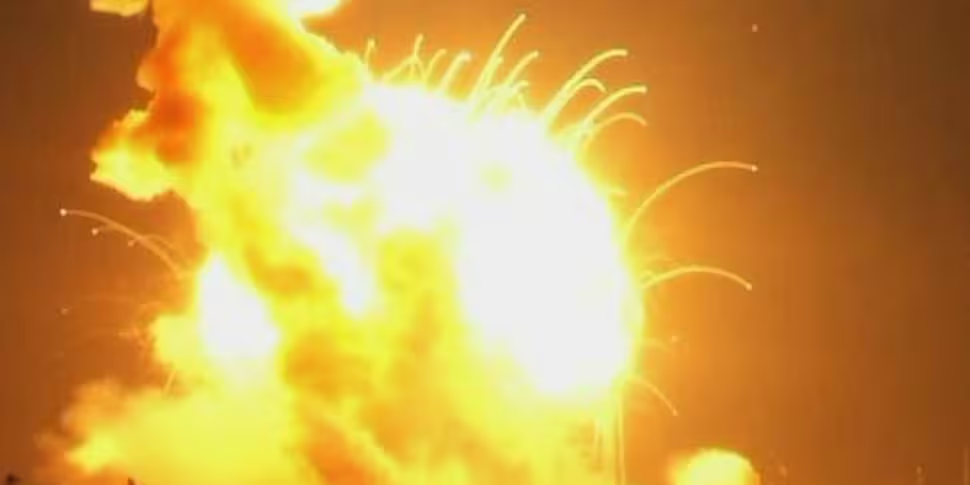NASA TV footage showed the Antares rocket, built and launched by Orbital Sciences Corp, bolting off its seaside launch pad at the Wallops Flight Facility in Virginia and exploding in a huge fireball seconds later.
Enveloped in flames, the rocket collapsed to the ground, as a cloud of dark gray smoke rose from the wreckage.
No one is believed to be injured and the damage appears to be limited to the facilities, according to the company.
Investigators quickly secured the perimeter of the area and forbade any outside interviews of witnesses or staff, citing classified equipment that had been aboard.
The cause of the accident is not yet known, and NASA mission control in Houston, Texas, called it a "catastrophic anomaly".
Engineers said the countdown and had gone according to plan and there were no issues apparent with the machinery.
The rocket was carrying a Cygnus spacecraft packed with nearly 5,000lb (2,200kg) of supplies and materials for space experiments, including investigating how to stop headaches in space, measuring the rate of pea-shoot growth, and how milk spoils in micro-gravity.
Cygnus was also carrying a prototype satellite by the startup company Planetary Resources Inc., which is working on technology to mine asteroids.
The launch was postponed on Monday after a boat ventured into a restricted zone within 10 minutes of take-off.
NASA is paying the Virginia-based Orbital Sciences and the California-based SpaceX company to keep the space station stocked after the space shuttles were retired.
Orbital has a $1.9bn (€1.45bn) contract with NASA for a total of eight supply missions.
The mission, known as CRS-3, was to be Orbital's fourth trip to the ISS.
After the launch, Cygnus was to loiter in orbit until 2 November, then fly itself to the station so astronauts could use a robotic crane to snare the capsule and attach it to a berthing port.
The station, a $100bn (€78.5bn) research laboratory owned and operated by 15 countries, flies 260 miles (418km) above Earth.
NASA spokesman Rob Navias said there was nothing on the rocket that was urgently needed by the crew.
You can watch live footage from the scene on NASA TV
Originally published 22.54









